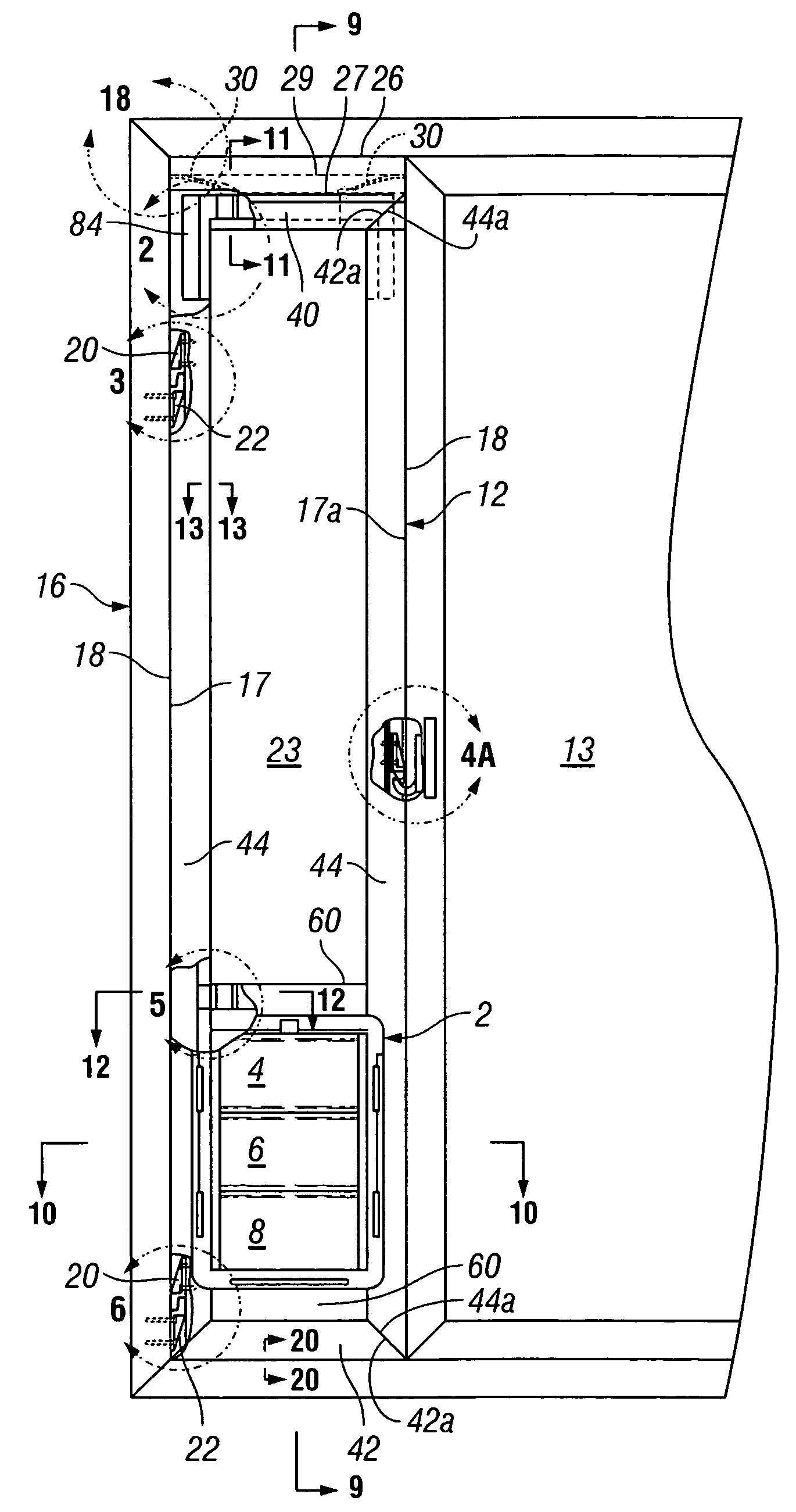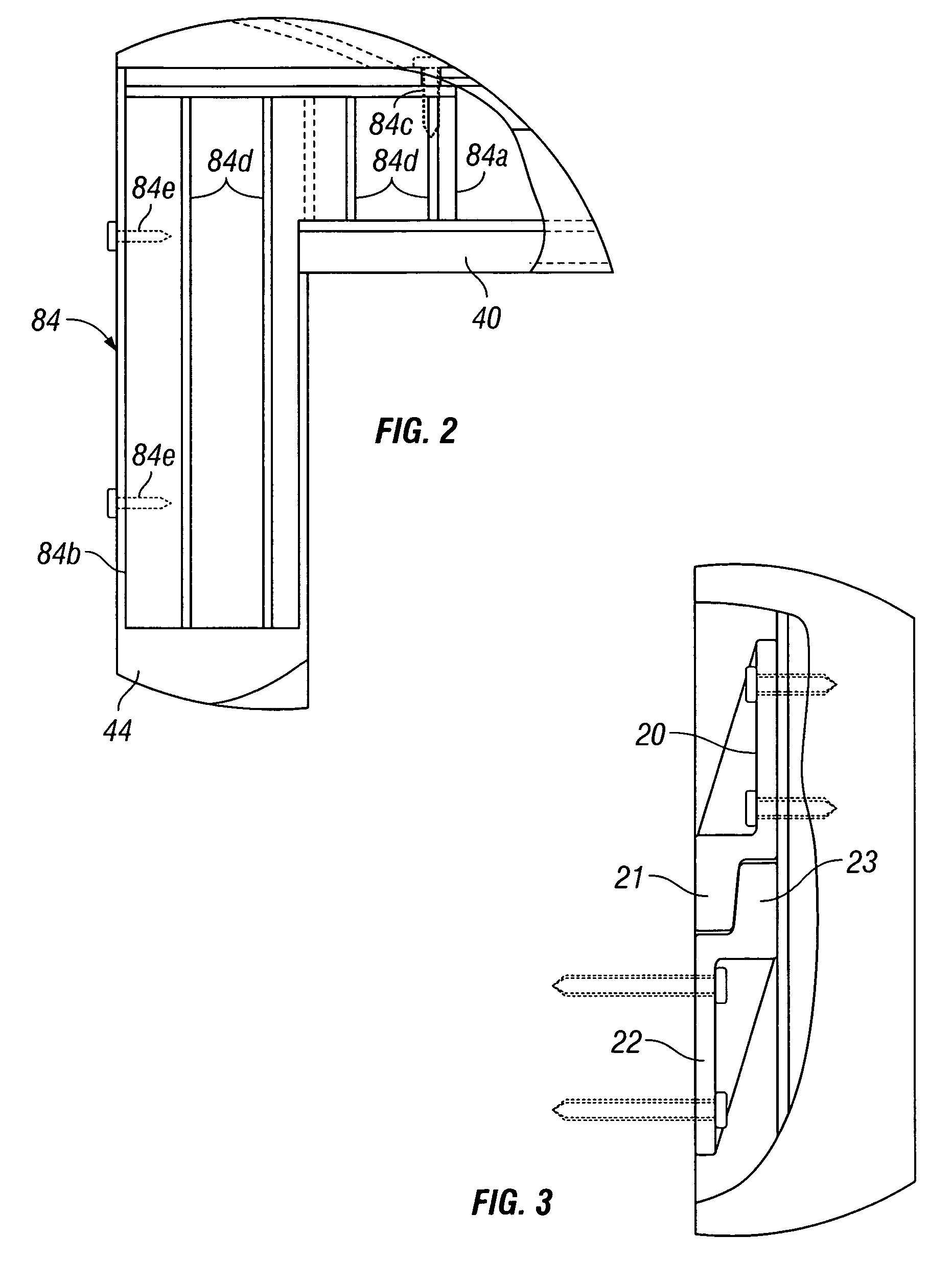Plastic pet door assembly
a technology for pet doors and assembly parts, applied in the field of pet doors, can solve the problems of unfavorable pet mounting in walls, uninsulated, and unsuitable edges of dogs, and achieve the effect of minimizing injuries to pets and little room
- Summary
- Abstract
- Description
- Claims
- Application Information
AI Technical Summary
Benefits of technology
Problems solved by technology
Method used
Image
Examples
Embodiment Construction
)
[0037]In one preferred embodiment, as shown in FIG. 1, a pet door 2 has multiple sections 4, 6, 8 that make up a flap 10. Each section 4, 6, 8 is hinged horizontally across the top to the section above it.
[0038]In FIG. 1, a door section 12 for installation in a sliding door has a pet door 2 incorporated within. The pet door also may be installed in a wall, a regular door, or other barrier where pet passage back and forth is desired.
[0039]In another preferred embodiment, door section 12 of FIG. 1 is a vinyl or plastic such as PVC (polyvinylchloride). The door section fits into a jamb or frame of a sliding door. In this embodiment, door section 12 can have any type of pet door in it. It need not be pet door 2.
[0040]Door Section
[0041]The door section 12 fits into many different sliding door frames. An exemplary frame 16 is shown in FIG. 1. Section 12 fits in frame 16 in a unique way. Preferably, section 12 has a symmetrical structure, such that either side edge 18 may have a first bra...
PUM
 Login to View More
Login to View More Abstract
Description
Claims
Application Information
 Login to View More
Login to View More - R&D
- Intellectual Property
- Life Sciences
- Materials
- Tech Scout
- Unparalleled Data Quality
- Higher Quality Content
- 60% Fewer Hallucinations
Browse by: Latest US Patents, China's latest patents, Technical Efficacy Thesaurus, Application Domain, Technology Topic, Popular Technical Reports.
© 2025 PatSnap. All rights reserved.Legal|Privacy policy|Modern Slavery Act Transparency Statement|Sitemap|About US| Contact US: help@patsnap.com



